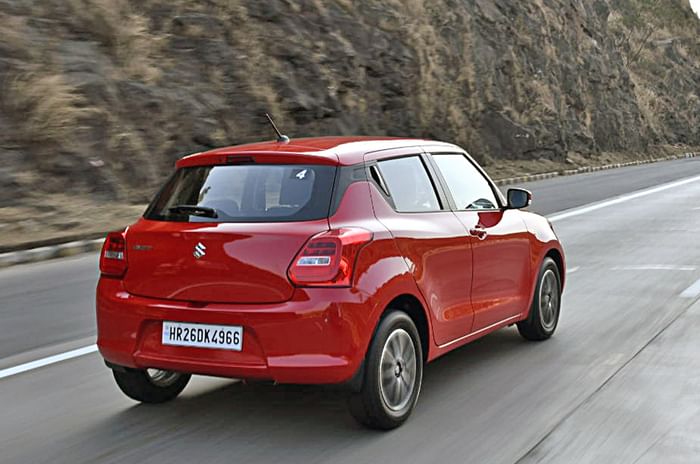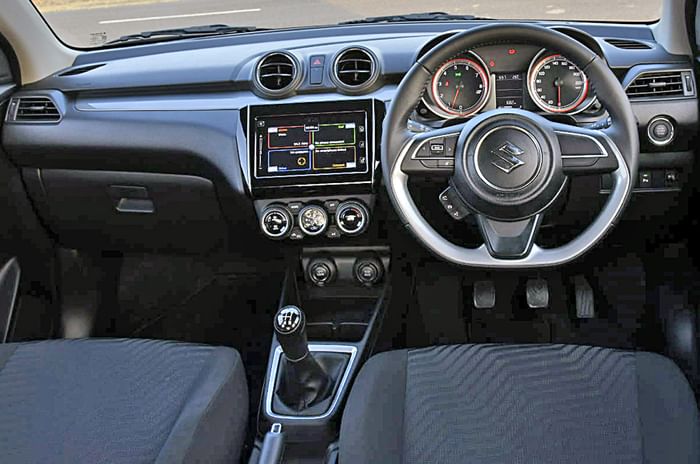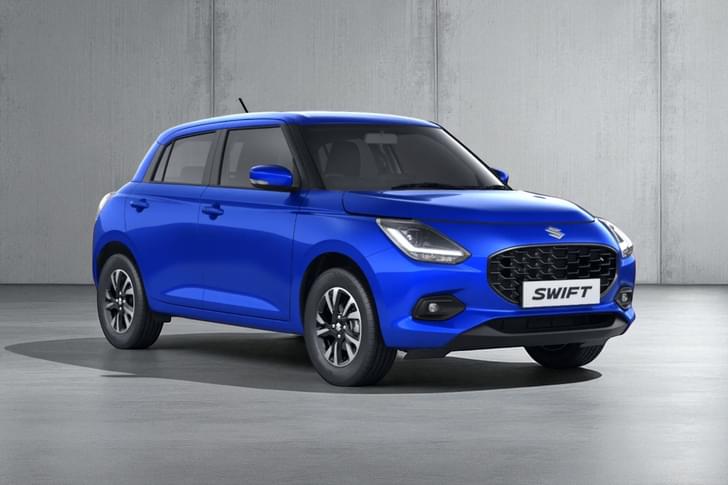What is it?
It's the successor to the Swift, the second-most popular hatchback in India. It was launched at the 2018 Auto Expo, with prices starting at Rs 4.99 lakh for the base variant and going up to Rs 8.29 lakh for the top-spec trim (ex-showroom, Delhi). One could argue that the Swift brand is so strong in India that even if the car turned out to be critically flawed (spoiler alert: it isn’t), they would still shift tens of thousands of them each month. Now, while we’ll evaluate it on every parameter like we do every car, we also want to see if it has inherited those particular traits that have been intrinsic to every Swift. These traits are more about character – the way it looks and the way it drives – but they’re a crucial part of the package.
Let’s start with the look. If the shift from Gen 1 to Gen 2 was a small evolutionary step, the shift to Gen 3 is a leap – but still an evolutionary one. Anyone familiar with the old Swifts could identify this one at a glance, even though so much of it is different. The headlamps are still swept back, but they’re more pod-like than the triangles of old, and now have a distinct LED running lamp signature and LED projector lamps on the top trim. Similarly, the tail-lamps do flow back over the rear haunches as always, but this time they’re more three-dimensional; in fact, the signature effect is lost at night, because when they light up, they just look like generic square clusters. There’s still a narrow glasshouse with a wider body beneath it, but since the car is 40mm wider now, the visual contrast is much greater – it is noticeably larger and also more ‘cab forward’ than the last car. The other Swift signature is the floating roof, which is now enhanced by a black bifurcation in the thick C-pillar. And, speaking of which, the rear door handle is now housed in the C-pillar, which gives the Swift the look of a three-door hatchback – it’s a design touch that’s quite passe but still looks cool nonetheless.
Another change is that the grille is now a single unit with a nicely designed mesh, and below it is an air dam in the chin that’s pushed a bit inboard, adding some aggression to the car’s ‘mouth’. A slight disappointment are the wheels, though. They’re 15 inches in diameter in top-spec, but their design and the tall 65-profile tyres they’re shod with, make them look smaller than they actually are. With the car’s greater dimensions, 16-inchers and wider tyres – which you get on the international version – would have done wonders for the stance. Still, overall, we think the new Swift delivers on the style front, and that’s a big battle won.

What’s it like on the inside?
We got a preview of the new Swift with the new Dzire that launched in 2017 – this can be said, to an extent, about the exterior as well, but really, it’s the interior that’s far more similar. The big difference is that it’s all black, rather than beige-and-black, and the somewhat tacky-looking faux wood has been replaced by simpler, more convincing grey plastic. We understand the sporty appeal of the all-black colour scheme, but we feel a little more brightwork, even if in the form of plastic trim would have livened up the somewhat drab ambiance. Still, there are a few more cool, new bits, like the circular central AC vents and the big rotary controls for the climate control, which operate with a solid, well-damped feel. Finally, there is a new instrument cluster with twin hooded binnacles for the speedo and tacho and red-ringed highlights. Sadly, the Dzire’s rather basic-looking central multi-info display returns; we were hoping for the Baleno’s high-res screen.
The equipment and additions, predictably, more-or-less mirror the additions we saw on the new Dzire. In the top Z+ cars, front and centre is the 7.0-inch SmartPlay touchscreen, and as with all the cars in the range, it gets Apple CarPlay, Android Auto, and its own integrated navigation system too. There’s auto climate control, auto headlamps, a rear-view camera, voice commands, keyless entry and go, LED projector headlamps and daytime running lamps. It’s a little disappointing that the automatic versions aren’t available in this top trim, as the Z trim they are available in misses out on some desirable equipment, like the touchscreen, rear-view camera and LED lamps (just plain-looking halogens here). Still, it still gets more than just the basics though. What is nice, however, is the focus on safety; all Swifts get dual airbags, ABS, seatbelt pretensioners and ISOFIX child seat mounts as standard, and Maruti says it complies with all current Indian crash test norms.
When it comes to space and comfort, the front half of the cabin, again, is identical to the Dzire’s. The seats are large and well contoured, but you realise soon enough into your drive that they’re cushioned a bit too softly, which could get uncomfortable for some over long distances. The driver’s seat is height adjustable though, and the sporty, flat-bottomed steering wheel is tilt-adjustable too. While frontal visibility is good, rearward visibility is significantly hampered by the thick C-pillars; another reason we wish the rear-view camera was offered on lower trims.

In the back, the new car has opened up a lot more space, which is welcome, as the previous cars were seriously lacking in this respect. Legroom and headroom, though perhaps not class leading, are vastly improved now, although shoulder room will still be a tad tight for three. But that old Swift bugbear of making you feel a bit hemmed in returns, thanks to the relatively small rear windows, and this is only made worse by those stylish, high-mounted outside door handles, whose housings eat into the glass area.
What’s it like to drive?
The new Swift uses Maruti’s 1.2-litre K12 petrol engine and the Fiat-sourced 1.3-litre Multijet diesel; the same engines used by most of Maruti’s current range, as well as both previous Swifts! While that fact might sound disappointing at first, know that a lot else has changed. For one, thanks to the new ‘Heartect’ platform shared with the Baleno and Dzire, the new Swift weighs around 85kg less than the last Swift! The chassis is also a whole lot stiffer, which should bode well for handling. Additionally, you can now get both engines with either a manual or an automatic gearbox; the catch is that the automatic in question is an AMT, not a CVT or a torque-converter, like in more premium Marutis. The advantage of an AMT is its low cost, but the disadvantage is a jerky driving experience. That might be a worthy trade-off in a budget hatchback or even a compact sedan, but is that something you’d want in a Swift?
| Maruti Suzuki Swift performance | ||
|---|---|---|
| Swift 1.2 petrol MT | Swift 1.3 diesel MT | |
| 0-60kph | 5.54s | 5.17s |
| 0-100kph | 13.25s | 13.67s |
| 20-80kph (in third gear) | 14.65s | 11.94s |
| 40-100kph (in fourth gear) | 20.75s | 15.26s |
We sampled all four powertrain combinations – some more thoroughly than others – and this is what we took away from it. The engines are as you remember them, but they feel altogether punchier in this new Swift, thanks to the lowered weight. The 1.2 petrol is responsive off the line, which makes it great for scooting around town, but like before, the mid-range is quite flat which means you have to rev it to squeeze the most out of it, and that’s no bad thing. This engine loves to be revved and the 6,200rpm rev limiter feels conservative – with the motor wanting to spin harder and faster. The Suzuki K-series motor is definitely the best all-rounder of the 1.2-litre naturally aspirated motors on sale right now. The five-speed manual is just a delight too, with short and snappy shifts, accompanied by a light clutch. This is definitely the combination to go for if you enjoy driving. The five-speed AMT with the petrol would work well as a city runabout, because at low speeds, it does the job of being ‘an automatic’ just fine, with surprisingly smooth and seamless shifts; even the creep function works well. It’s only when you ask for some added pace, or have to do a hill start, that you’ll encounter those familiar AMT issues – a deep pause in power delivery between shifts and a jerkiness when they do happen. Still, we have to say, Maruti’s AMT tech has come a long way since the days of the original Celerio AMT.
The five-speed AMT on the diesel isn’t as seamless an experience as the one on the petrol, as aside from its own inherent shortcomings, it has to work around the 1.3-litre Multijet’s turbo lag. The result is more jerkiness and interruptions to power delivery than in the petrol auto, and this feels the weakest option in the range. However, if you want a combination of frugality and ease of use, few other powertrains on sale will come close. On to the final option, the diesel manual. It’s a pleasant surprise how light the clutch and the gearshift action are, and that’s a good thing because it’s easy to get lost in a trough of turbo lag, and you will often have to shift your way out of it. This is especially true when you’re climbing a hill or a mountain road, and it sort of robs some of the fun of driving a Swift fast. Still, when you aren’t tearing around at speed, the Multijet’s strong mid-range comes into play, and provided you can keep it smoothly in the meat of its powerband, it makes any sort of progress very effortless.

But here’s the crucial bit – the dynamics. The second-generation Swift was a bit softer than the sharp-as-a-tack original, so is this one a return to form? Not quite. On one hand, the new, stiffer, lighter chassis makes itself quite apparent in how well it holds things together in corners. The suspension, too, is well judged, with body movements being decently contained. However, as with the Dzire, the steering feels completely lifeless and doesn’t return to centre freely. It feels slightly weightier in the diesel cars, but it’s still a far cry from the Swifts of old. Sure, you’ll probably get used to driving it in town, and in a sedan like the Dzire, you might be able to forgive it, but this is a Swift, and fun driving characteristics are meant to be a part of the package. The ride feels a little on the firm side and a bit jiggly over rough patches at low speeds, but as you pick the pace up, it smoothens out beautifully. Once you’ve gotten going, bump absorption is actually rather good and the suspension works really silently. Overall, the ride has a nice maturity to it and endows the Swift with a nice, big-car feel, even though it’s so much lighter this time.
Should I buy one?
The waiting period at some locations has already gone up to six months. You see, the Swift may have lost some of the original’s fun and funky DNA, notably in the dynamics department, but that hasn't stopped buyers from lapping it up. Yes, that’s because of how strong the Swift name is, but also because, lifeless steering aside, it’s just a great hatchback. It’s got the look, for one, and that’s a big enough selling point on its own. But then it’s also got a long equipment list, good space and, crucially, a bigger boot too. It’s worth noting that it’s probably not best in class in any of these areas, but it’s close enough. We do wish, however, that Maruti gave the lower variants a bit more kit to make them look and feel a little more special. That the new Swift will be a success is practically a given, but what you need to know is that this time around, when it comes to those inherent Swift traits, sharp handling has been replaced by something else, and that’s a certain big-car maturity that’s new to the brand.











































